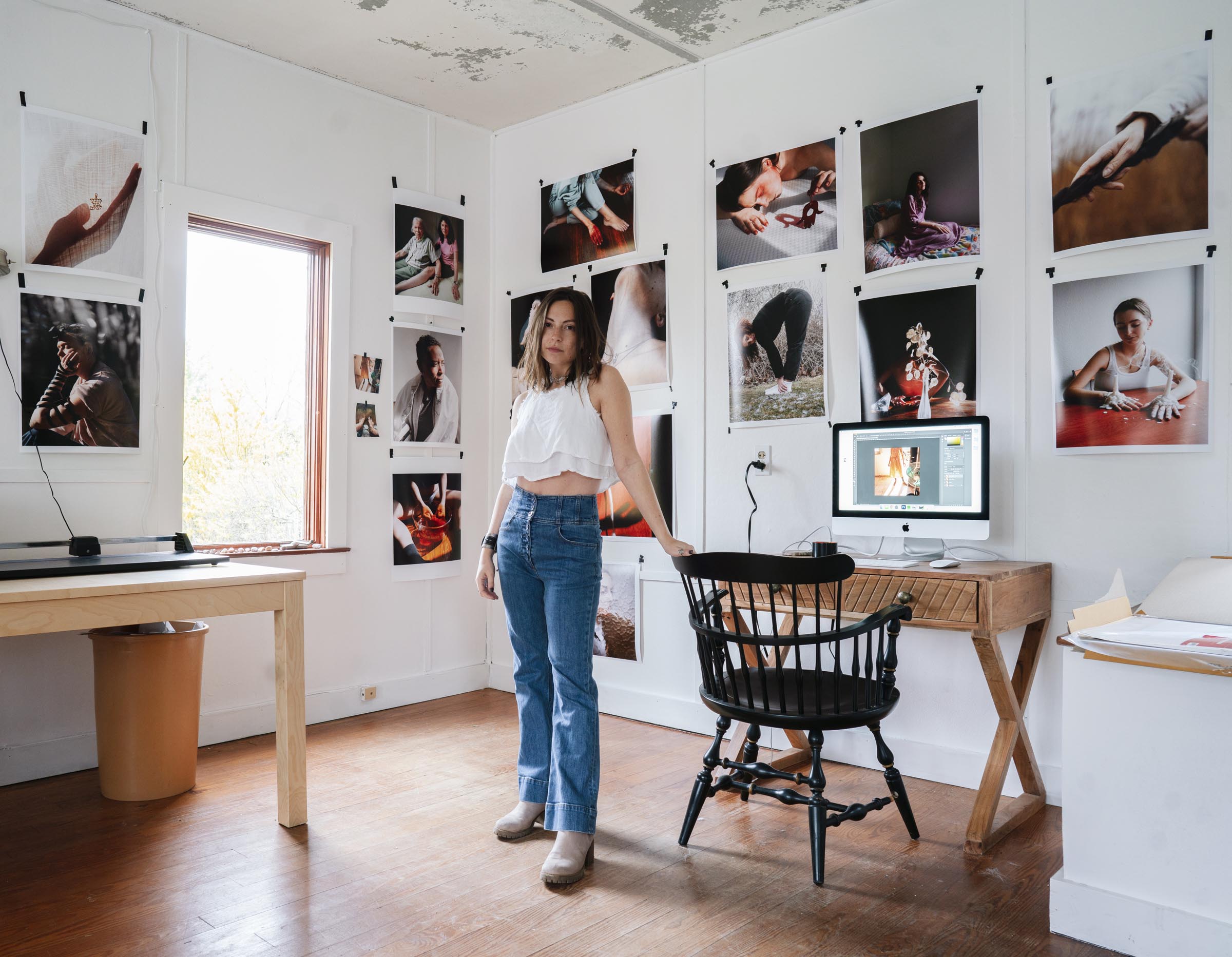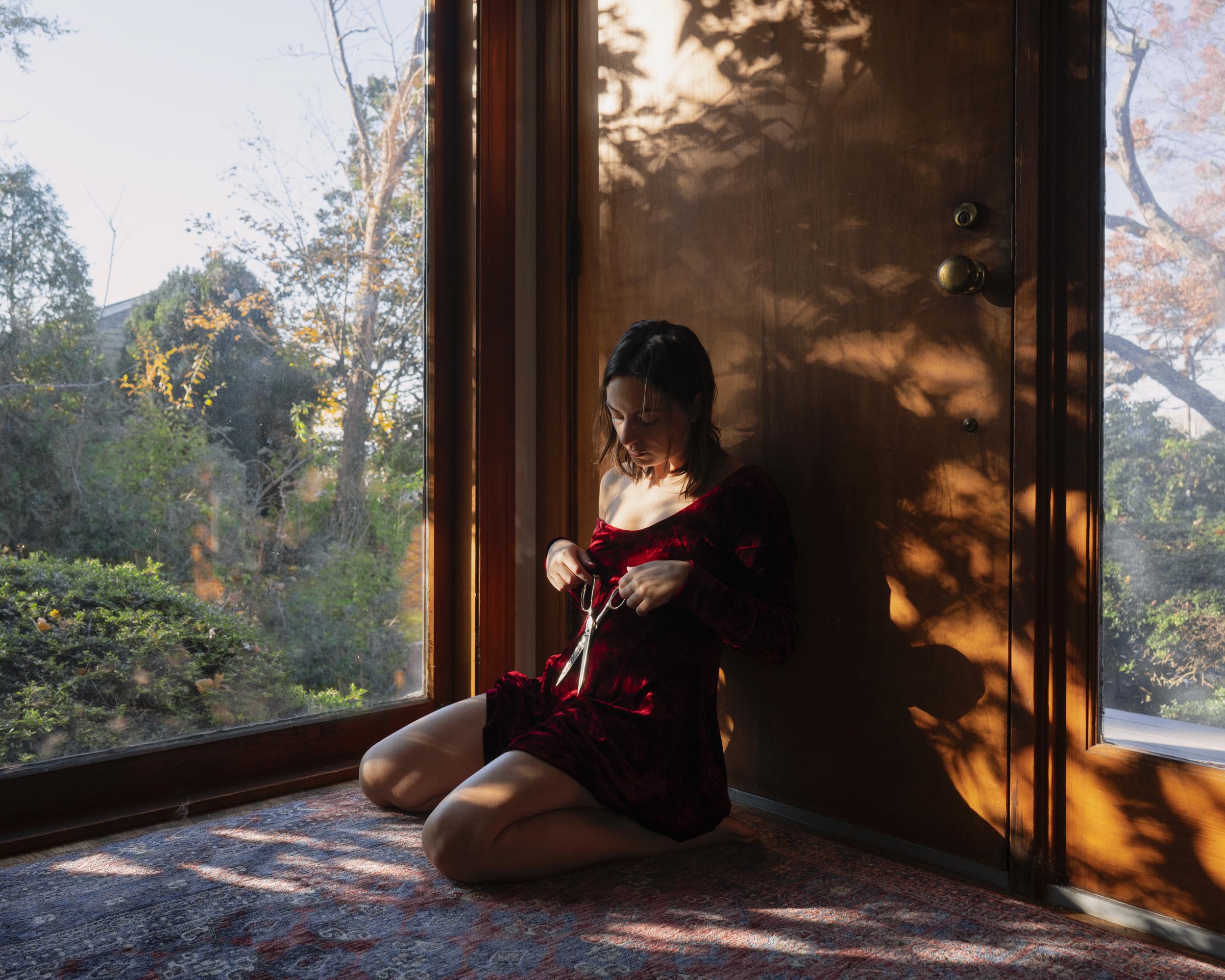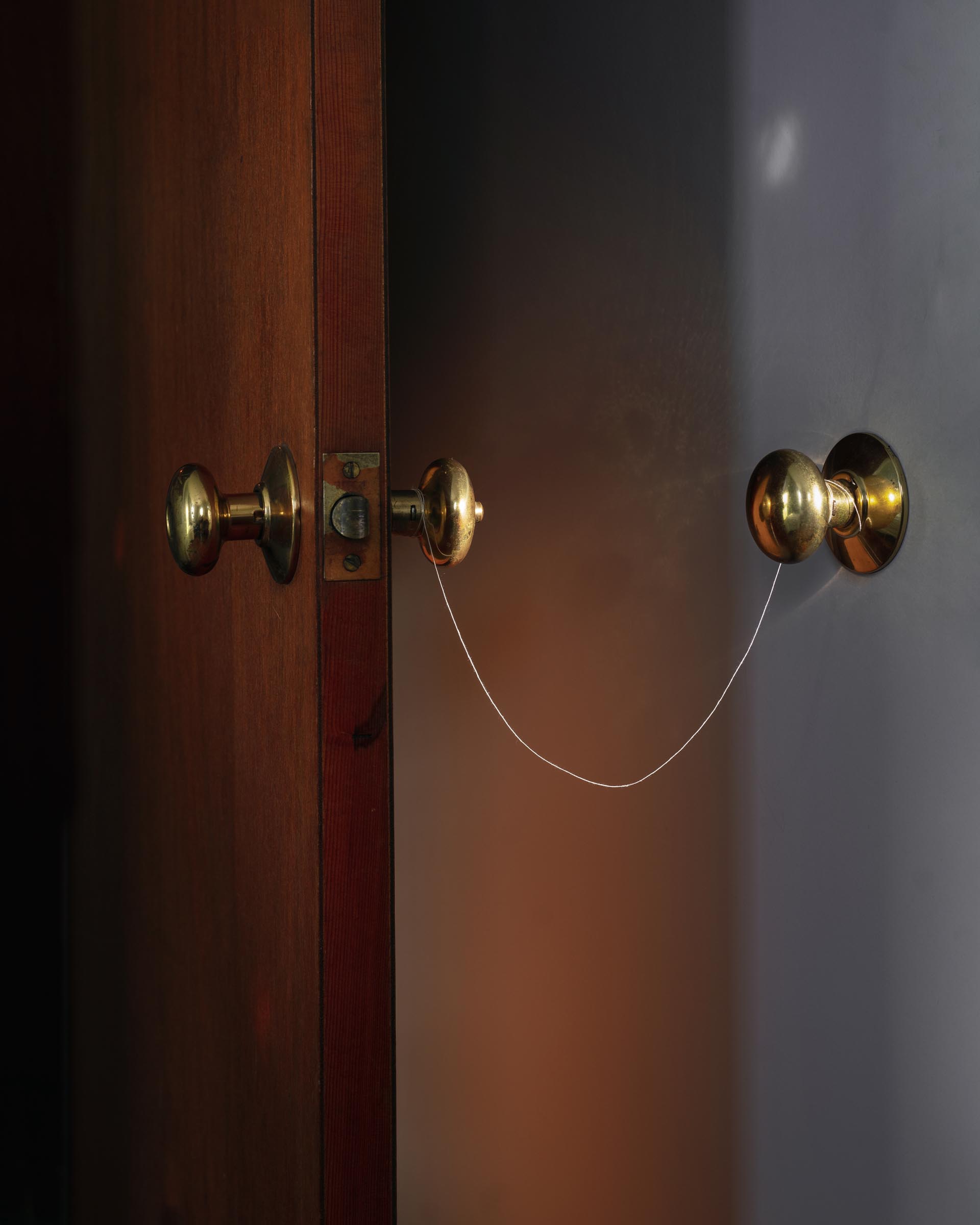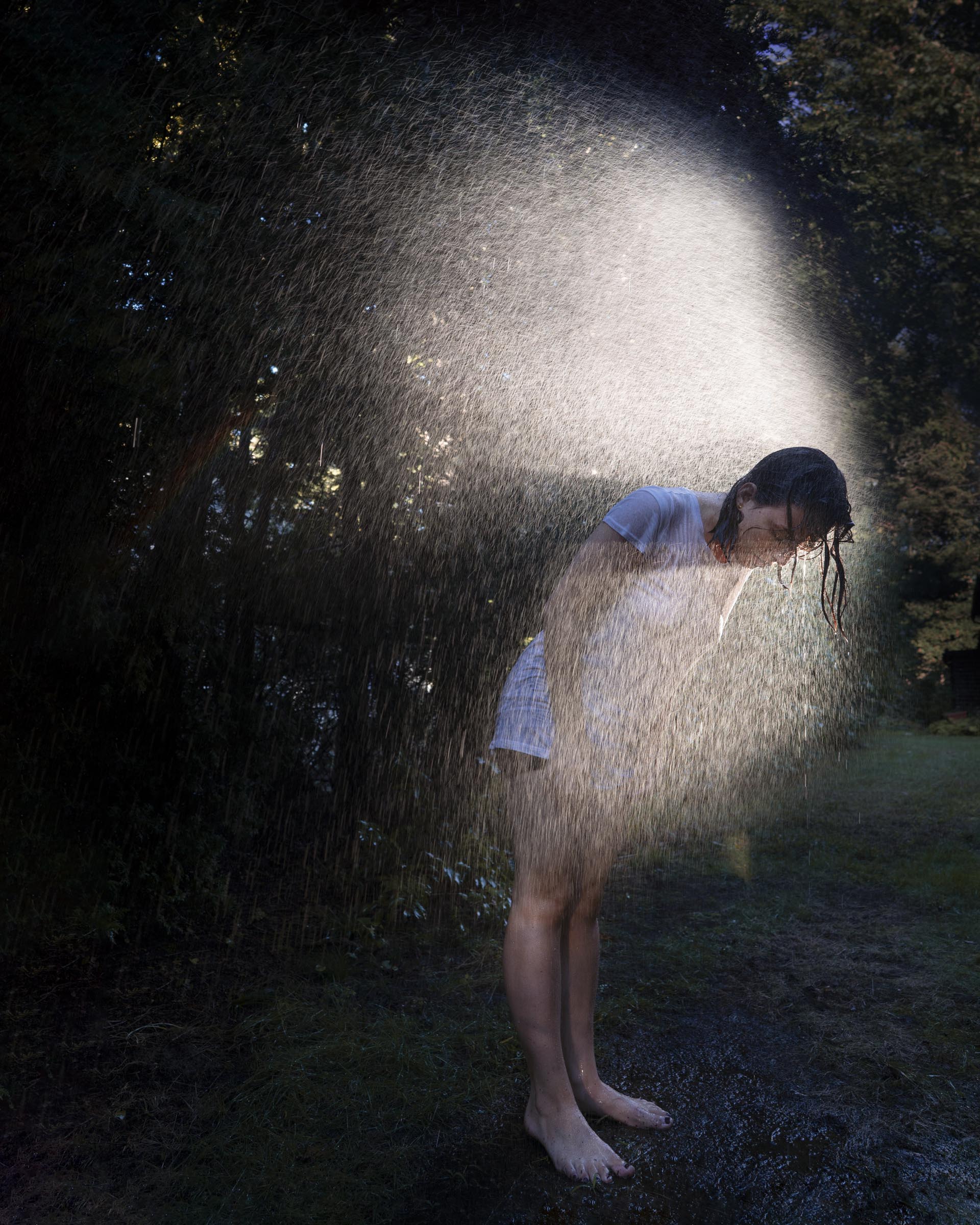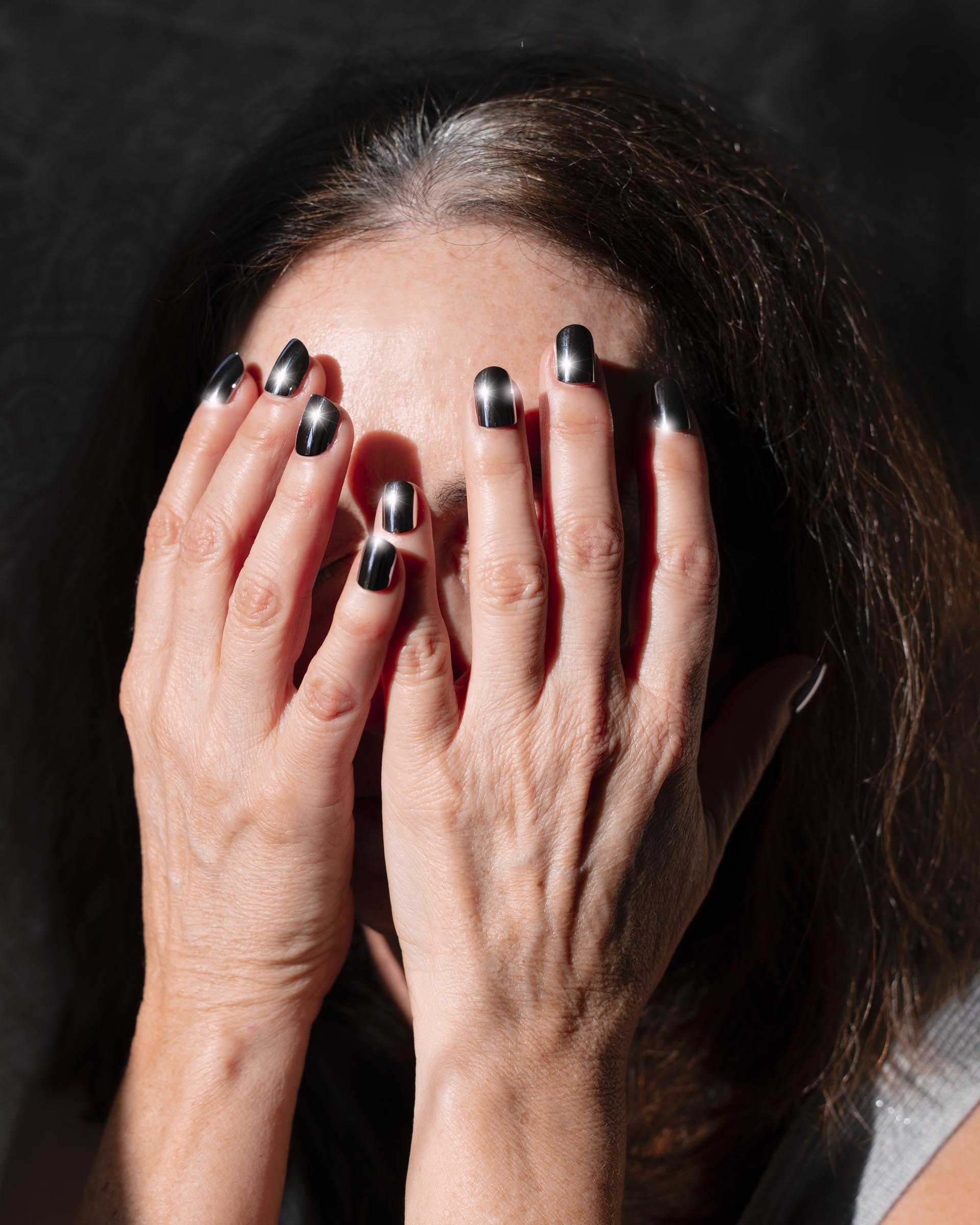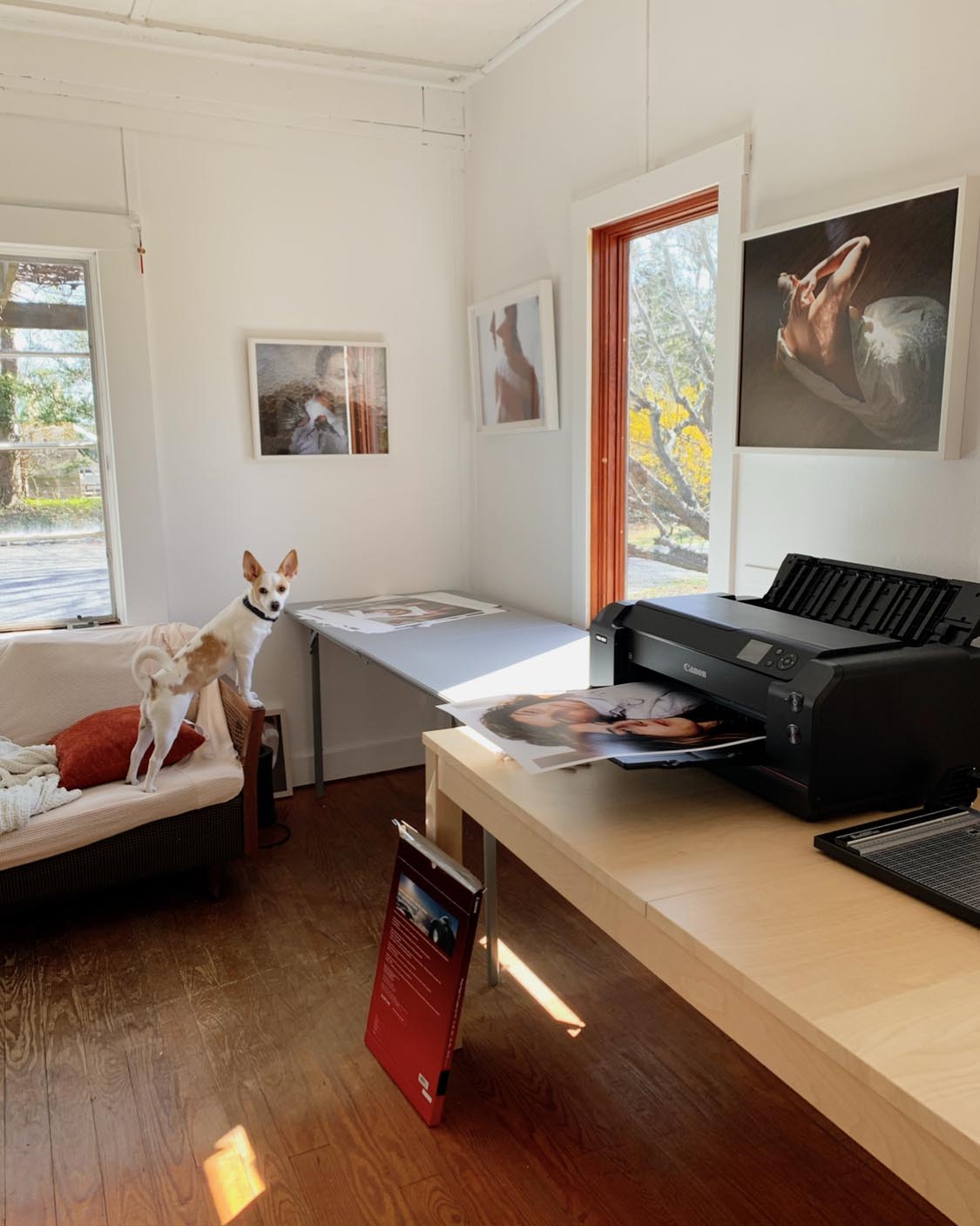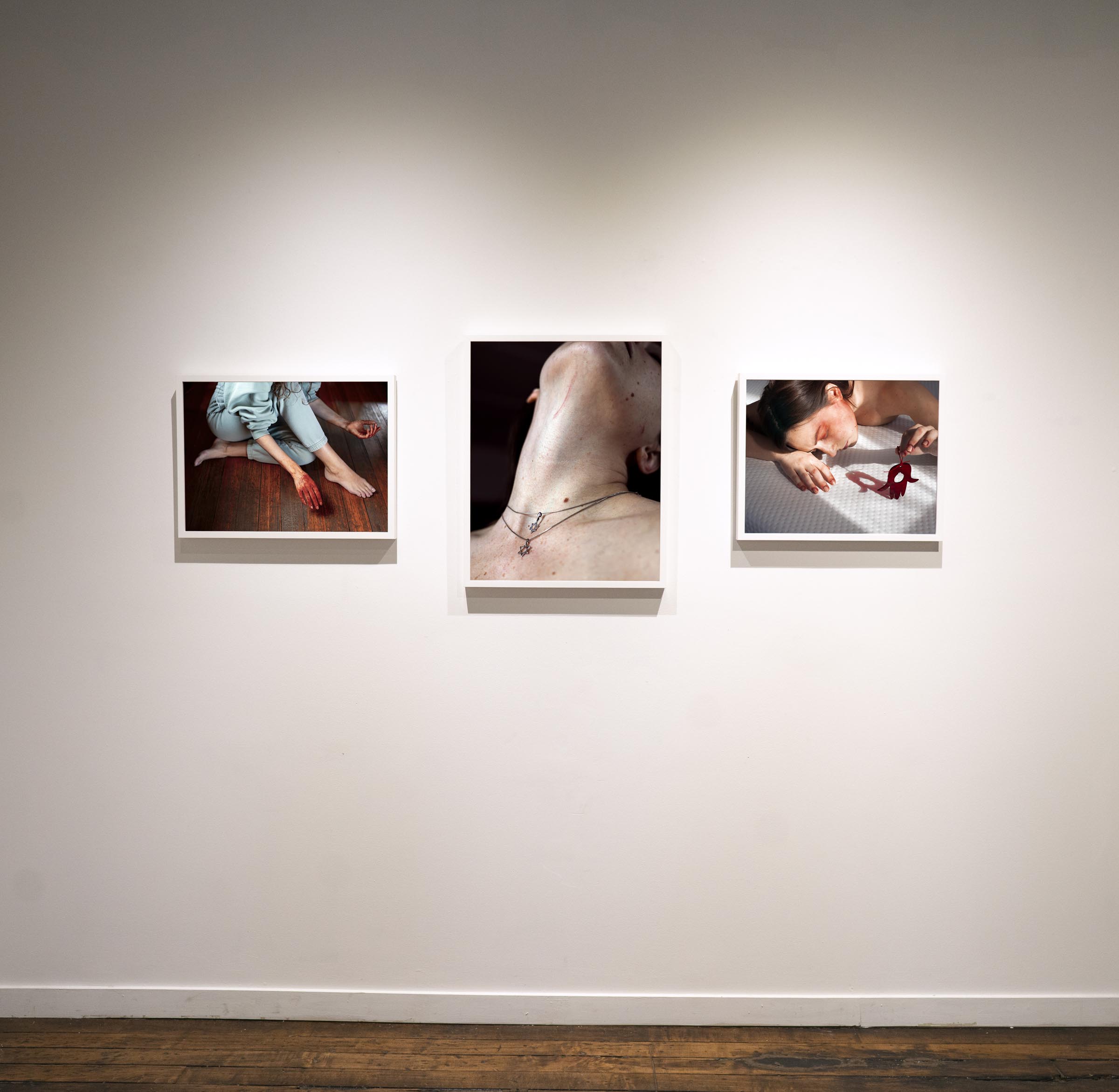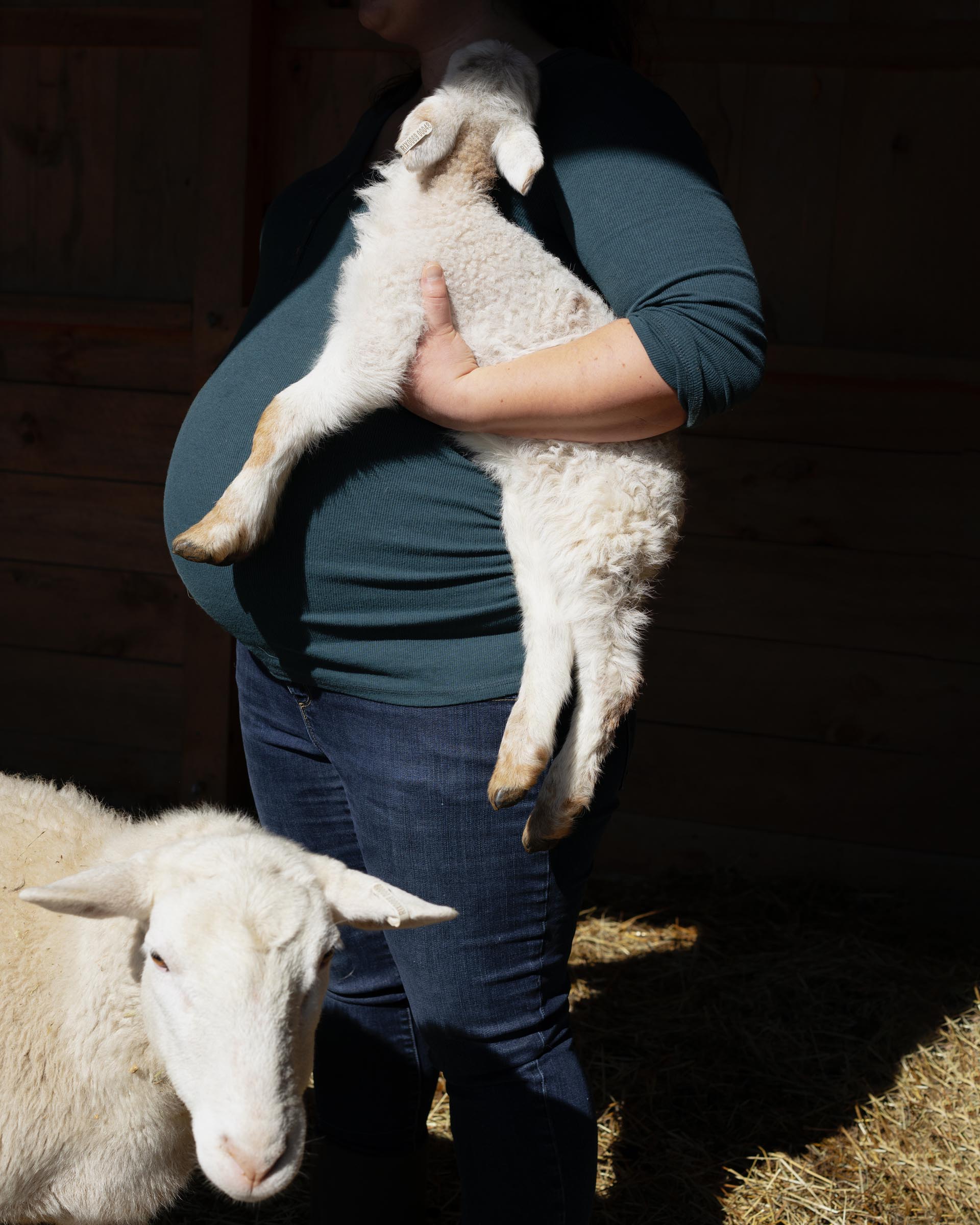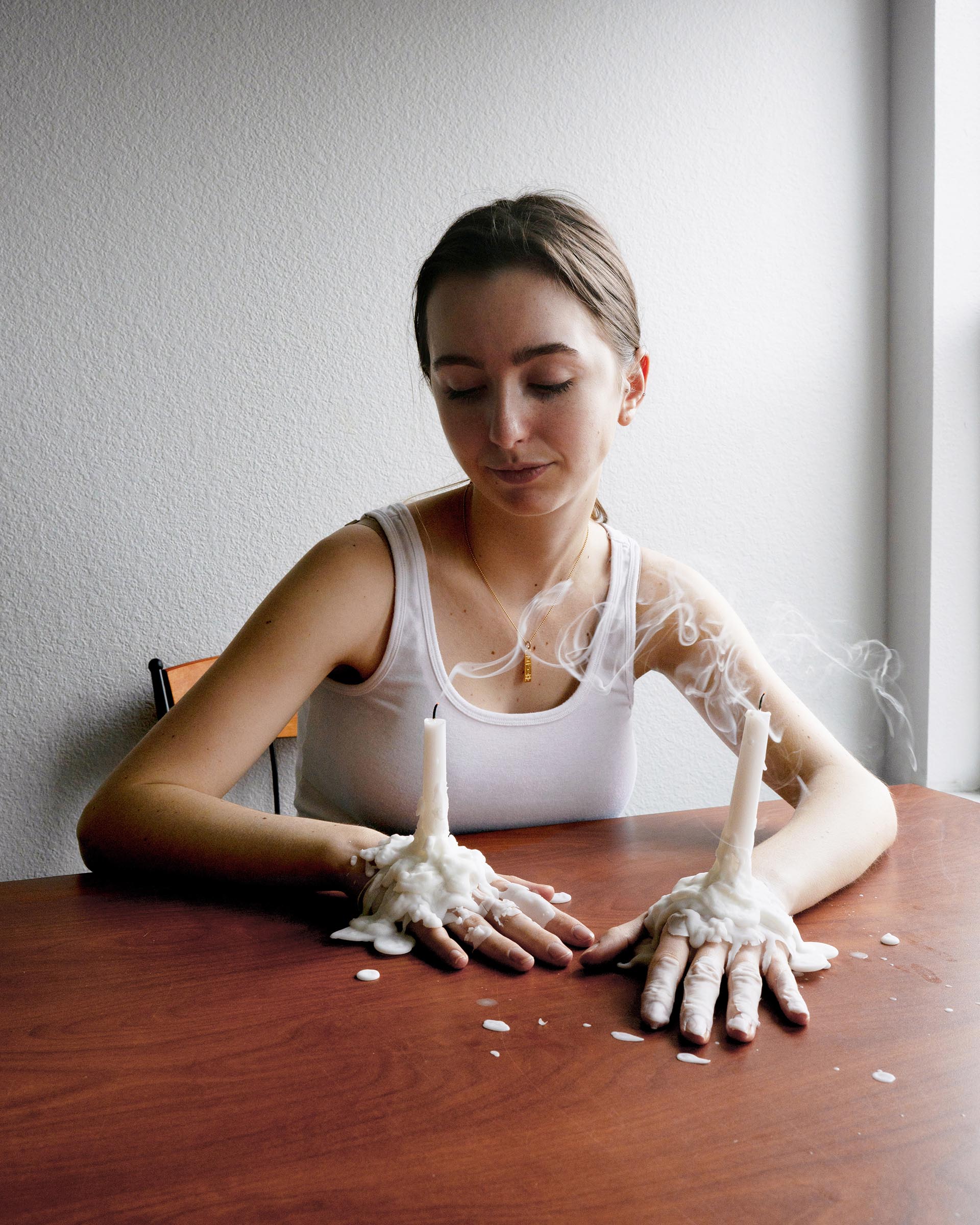How did you get into making art?
I was lucky to fall into step with photography very early. When my grandparents handed me a point-and-shoot camera in the early aughts I knew pretty immediately it was my soulmate.
Ironically, I’m also incredibly near sighted; the scene of a scrawny tween wandering around suburbia with a camera pressed up to coke-bottle glasses while taking pictures of flowers probably best describes how I looked developing my image-making skills, but at the time it felt very romantic.
What are you currently working on?
I’m working with self portrait photographs that explore Jewish storytelling in the space between answers as a way to build repetitive, incomplete, nonlinear narratives.
What inspired you to get started on this body of work?
For the past few years I have been making photographs about Jewish culture and memory that often involved photographing other Jews, traveling to make work, and working at a very quick rate.
At the onset of the pandemic, I started house-sitting a friend’s family beach house in a small town in Rhode Island with the intention of staying “just until this crazy thing was over.” We know how that played out.
This new slow pace, in addition to reading a lot of Yiddish children’s folklore, got me thinking about the way Jewish stories are repeated across different environments and how self portraits engage similar modes of motif repetition. Two years later, I’m just emerging from this cottage to move to Boston, and am curious how the work will grow.
I’m working with self portrait photographs that explore Jewish storytelling in the space between answers as a way to build repetitive, incomplete, nonlinear narratives.
Hannah Altman
Do you work on distinct projects or do you take a broader approach to your practice?
I wish I had the discipline to separate my work into projects, but I almost never do. It mostly overlaps, conceptually and visually. I tend to keep a group of 20ish images that make up “what I’m currently working on,” and slowly I let new photographs replace work that doesn’t quite fit in the edit anymore. I do this very sporadically and intuitively, so I’m always surprised to look at the print table and realize a new branch has grown from the trunk of the existing work. This mode of making is helpful to me because it places new, soft ideas into existing worlds to see how they shape.
What’s a typical day like in your studio?
I’m an early bird and tend to take the sunlight’s lead in shaping my day. On sunny days, I’m often photographing self portraits as soon as I wake up, and if I have plans to photograph someone else it tends to be a calm hour in their domestic space and concluded before the afternoon sun sets. I tend to hoard props and ideas for weeks or months on end before the environment feels right to enact them, so I really am often at the whim of how a window activates a room. I edit, print, and workshop ideas in the early evening. On dreary days, I try to write artist statements. I live in New England so I get a lot of writing done.
Where do you go to discover new artists?
Much to my dismay, I’m still an active Tumblr user, and have used the doomed site as my place of discovery for over a decade. I still find it the most beneficial after all these years because I don’t use it as social media, I use it as a research tool. The resources that I follow share work that exists outside of whatever topics and aesthetics are trending on social media apps, which makes finding new work feel more private, impactful, and sustainable.
